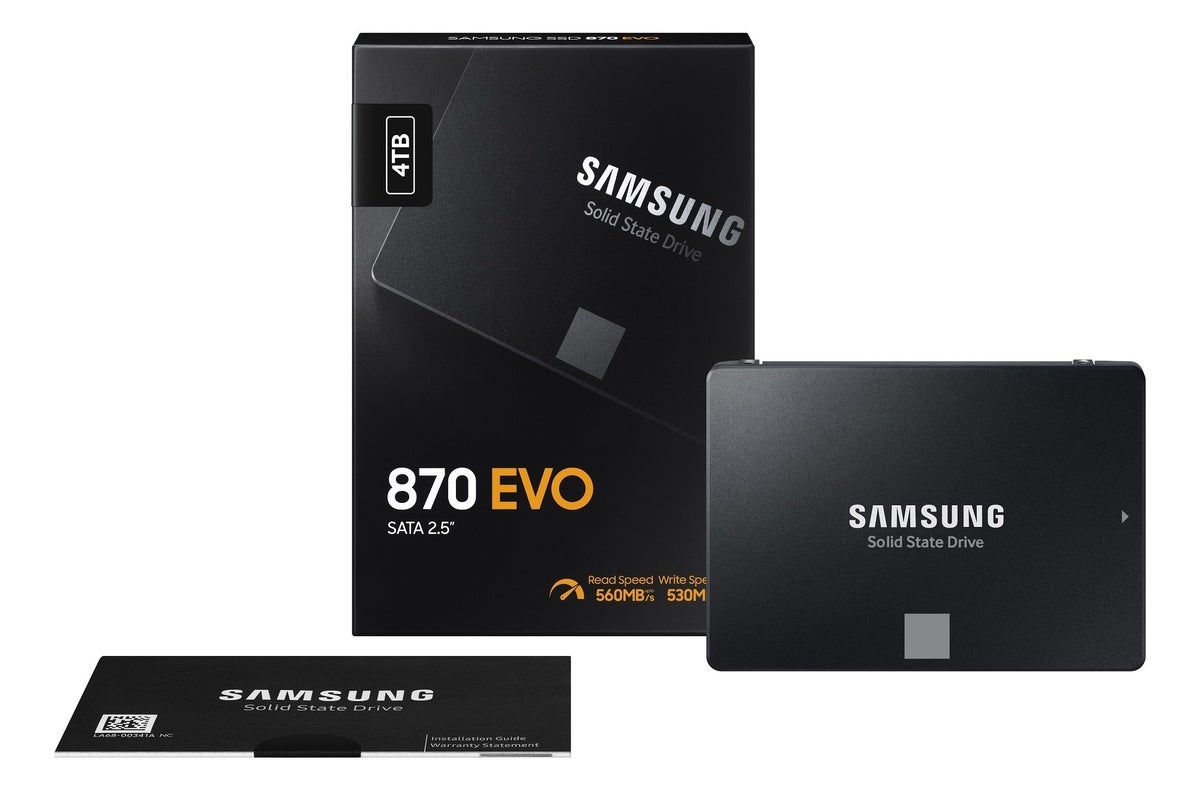 At a Glance
At a GlanceExpert's Rating
Pros
- Excellent performance, especially with small file operations
- Unlike the QVO, long writes don’t slow down
Cons
- A little expensive
Our Verdict
The Samsung 870 EVO is a little pricier than the competition, but it’s also faster with small file operations. You get what you pay for, and in this case, you get a lot.
Best Prices Today: Samsung 870 EVO SATA SSD
Samsung’s been at the top of the SSD storage food chain since the day the company entered the market, and the 870 EVO honors that tradition. It’s the fastest SATA SSD we’ve tested, it’s available in up to 4TB of capacity, and it’s exceedingly affordable given its speed.
This review is part of our ongoing roundup of the best SSDs. Go there for information on competing products and how we tested them.
Specs and pricing
The 870 EVO is a 2.5-inch, SATA 6Gbps SSD employing Samsung’s own TLC (Triple-Level Cell/3-bit) V-NAND. The company is typically coy as to on the actual controller technology or the number of layers, but it’s likely an in-house Samsung-designed controller with, judging from the capacities, 92 or 96 layers.
The drive will ship in 250GB/$40, 500GB/$70, 1TB/$130, 2TB/$250, and 4TB/$480 flavors (see note at end). There’s 512MB of primary DRAM cache for every 250GB of capacity, and the drives are rated for 150TBW (TeraBytes that may be Written) or five years of service—whichever comes first. That is, the five-year warranty is invalid once you exceed the TBW rating. Most end users won’t come close to writing that much data, so consider it five years.
The 870 EVO uses Samsung’s TurboWrite variable secondary cache algorithm, in which the main NAND is treated as SLC by writing only a single bit per voltage level. That should allow top write performance until the drive nears full capacity. As a rule of thumb, you should stay below 75 percent of capacity when using SSDs or performance will suffer.
Performance
The 870 EVO proved the fastest overall SATA SSD we’ve tested so far, largely due to its superior performance with small files. We’re not talking the same kind of difference you’ll see with far faster NVMe technology—6Gbps SATA itself is the limiting technology. Numbers are very similar for all top-tier SATA drives. That said, the 870 EVO will cut a second or two off a lot of tasks and over the long run, that will add up.
Note that I included the 2019-era Seagate IronWolf 110 in the comparisons, as it’s one of the few drives that can keep up with the 870 EVO in all phases. However, it’s significantly more expensive and designed for SMB or the enterprise.
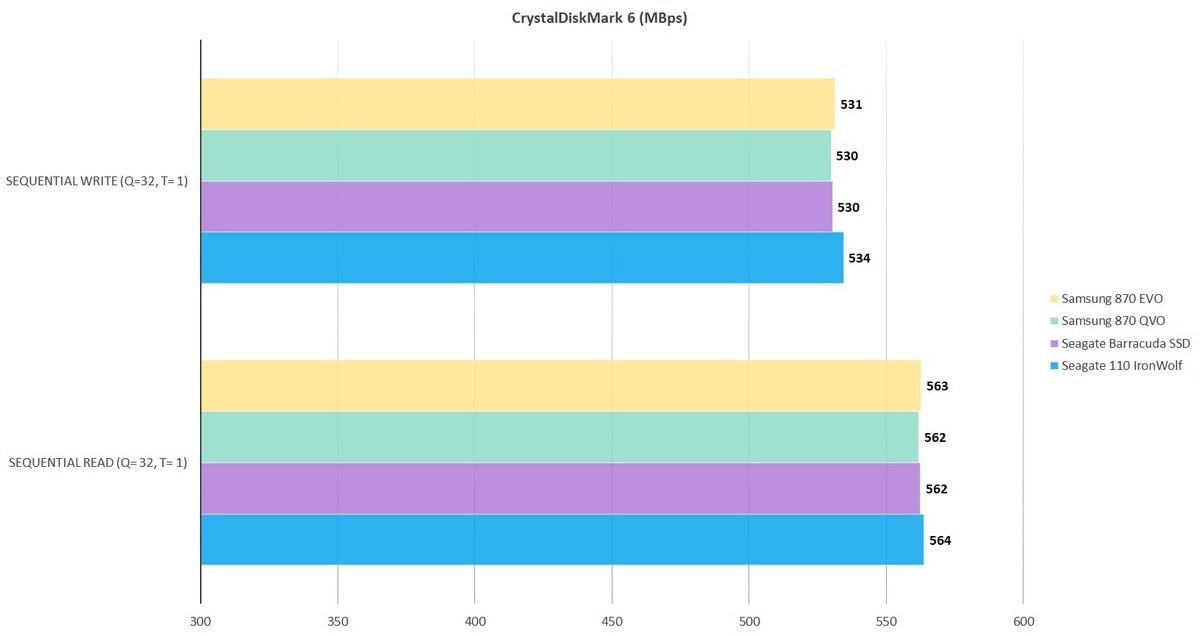
Sustained reading and writing are limited by the SATA bus, hence the statistically meaningless differences shown here. But check the 450GB test to see where the 870 QVO falls behind.
As you can see above, there’s scant difference among the competitors when it comes to sustained write or read performance. However, as you can see below, design prowess and components can, and do, make a difference in random/small file performance.
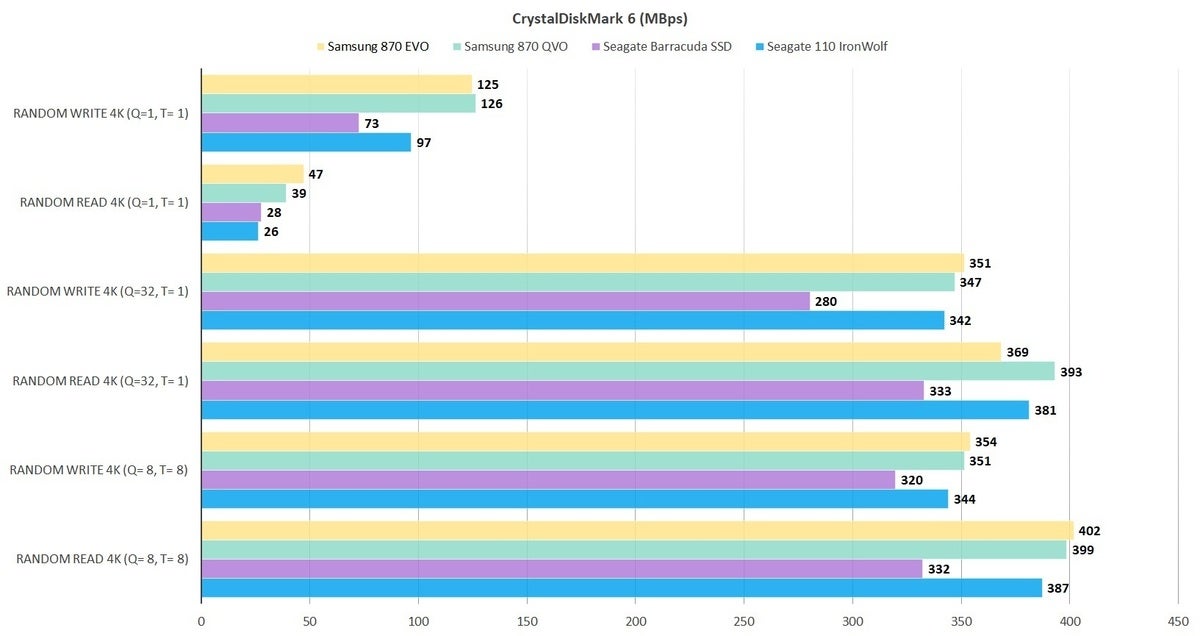
The 870 QVO offers outstanding small file performance, only losing out in some tests to its QVO cousin.
As in the CrystalDiskMark 6 sustained throughput test, the differences between the drives in our 48GB transfers were slight. The 870 EVO still took home the win by 12 seconds, or about 2 percent.
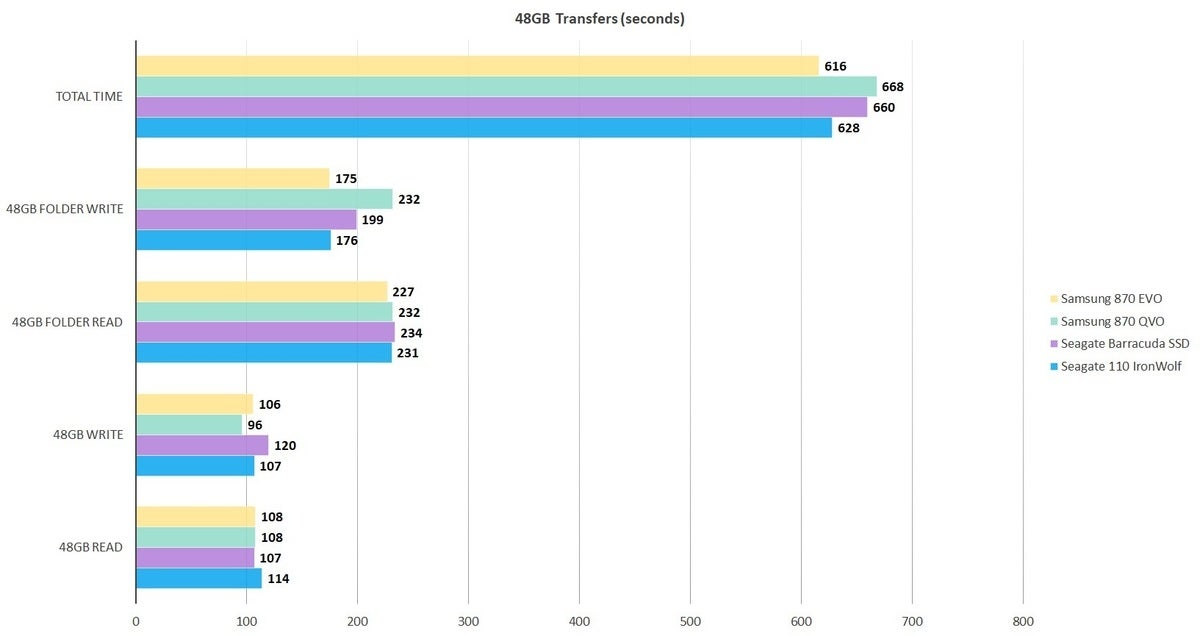
The Samsung 870 EVO was the fastest overall in our real world 48GB transfers, though by a relatively small margin.
Below, you can see why the 870 EVO is a bit pricier than the 870 QVO: The latter slows down to a miserable 150MBps when it runs out of secondary NAND cache. The 870 QVO doesn’t allocate NAND as secondary cache dynamically, as does the 870 EVO.
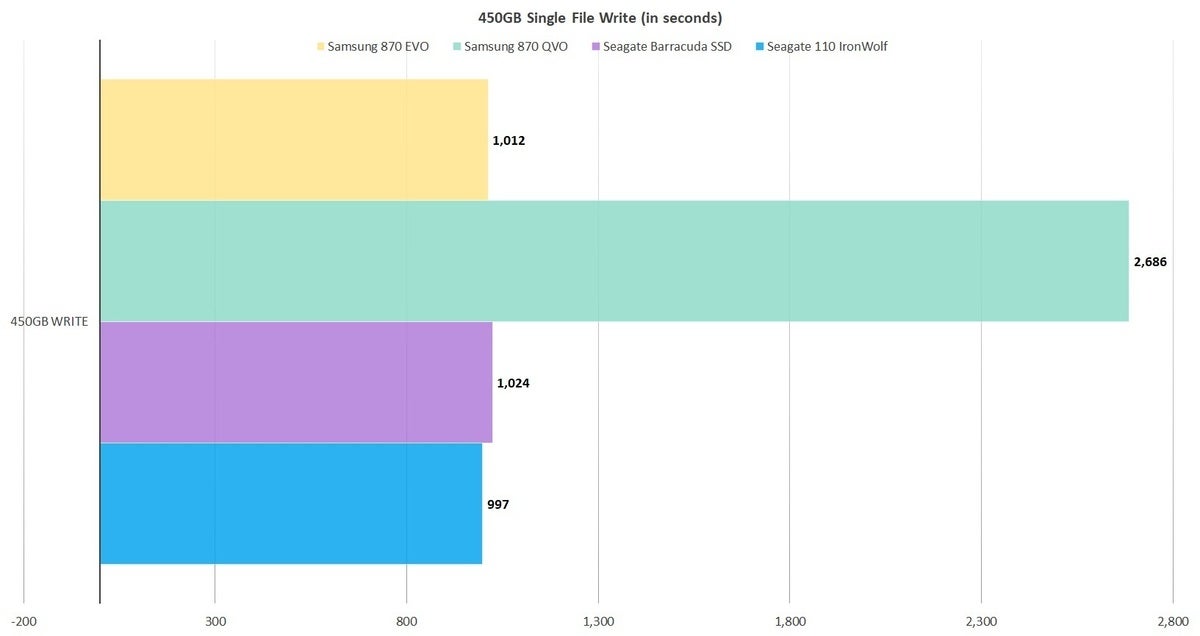
This is why you might want to spend more money on an EVO (or the others) rather than a QVO. If long writes aren’t’ something you do, don’t sweat it. Note that this was the 2TB version of the QVO; the 8TB version would have more secondary NAND cache and not slow down as soon.
The 450GB write was performed on both the 1TB and 4TB models, resulting in a 5-second difference which is well within the expected variation. That means the TurboWrite is doing its job on the larger capacities. You might see a slowdown with the 500GB model, though it shouldn’t be as drastic with the TLC-based EVO as it is with the QLC in the 870 QVO.
The PCIe 3 tests utilized Windows 10 64-bit running on a Core i7-5820K/Asus X99 Deluxe system with four 16GB Kingston 2666MHz DDR4 modules, a Zotac (NVidia) GT 710 1GB x2 PCIe graphics card, and an Asmedia ASM2142 USB 3.1 card. It also contains a Gigabyte GC-Alpine Thunderbolt 3 card, and Softperfect Ramdisk 3.4.6 for the 48GB read and write tests.
The PCIe 4 testing was done on an MSI MEG X570 motherboard socketing an AMD Ryzen 7 3700X 8-core CPU, using the same Kingston DRAM, cards, and software. All testing is performed on an empty, or nearly empty drive. Performance will decrease as the drive fills up.
Best in the price range
The Samsung 870 EVO is easily the best performer in its class, and a top performer in in any class across all usage scenarios. If you never write very large files, you could opt for the cheaper 870 QVO. Just make sure you go for a capacity well beyond what you think you’ll need. If you’re not strapped for cash, the 870 EVO is easily the better drive, the more future-proof of the two, and our recommendation.
This article was edited on 01/20/2021 to reflect a change in initial pricing. The 250GB through 1TB drives were originally quoted to us as $10 more, the 2TB as $20 more, and the 4TB, $40 more.



